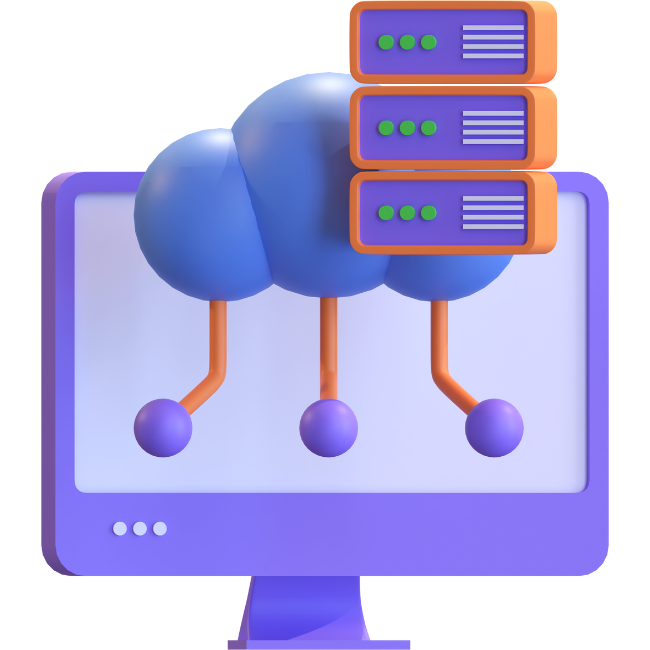When considering a move to the cloud, your goal will be to improve your situation. Depending on your unique requirements, you can take advantage of the various benefits of cloud computing.
Whether you’re tackling a new deployment or migrating an existing service, you want your cloud setup to be better than deploying on-premises. To do this, you must first understand the broader benefits of cloud computing technology and how they apply to your business.
In this situation, most people take a high-level approach to understanding the benefits of cloud computing. But when you look at the big picture, it’s not always easy to put into context how your business can realize these high-level benefits. Without understanding some of the underlying complexities, you won’t fully appreciate the real value these solutions can bring to your organization.
In this guide, we go beyond the typical approach that many take. Our goal is to give you a clearer, more complete picture of the benefits of the cloud. We go beyond the big picture, so as we focus on each cloud benefit, we’ll dive deeper to help you understand the underlying features and functionality that come together to make them a reality.
Join us as we take you on an exploration to help you better understand the benefits of cloud computing in 2021.
Cloud computing: cost savings
Cloud migration services allow you to trade capital expense for variable cost. Instead of a massive investment in server hardware and software that you may not need, you pay when you use computing resources and only for the amount you use.
With the right approach, cloud computing can be the most cost-effective approach to deploying, managing, and updating your IT infrastructure.
The very nature of cloud computing is designed to save costs. Flexible pricing models, control over compute resource consumption, and elimination of associated management costs are just ways that cloud computing offers real cost savings compared to on-premises deployments.
Let’s take a closer look at some fundamental mechanisms that enable the cloud to deliver cost-saving benefits.
Economies of scale
Cloud computing allows you to achieve lower variable cost than you can realistically achieve on your own.
With aggregate usage across hundreds of thousands of customers, leading cloud providers can achieve massive economies of scale, allowing them to pass on the benefits of a low-cost, pay-per-use pricing model.
Creates affordable access to cutting-edge technologies, including robotics, machine learning, and quantum computing. You could never afford these technologies outside of the cloud service model, as the combined hardware, software, and associated costs of implementing and maintaining such advanced technologies are astronomical.
The cloud is also a game changer for smaller businesses. It levels the playing field, opening the door to technologies previously only available to large-scale businesses.
Pay per use
Cloud pricing models give you the flexibility to control the costs of your technology consumption.
You can add or remove cloud services when you need them, scaling your resources according to demand, whether it’s seasonality or the working hours of your staff, while avoiding the deployment, management, and upgrade costs associated with cloud services. local implementations. .
On-premises deployments require you to incur the capital cost of owning hardware and software. Whether you use the technology or not, you’ll also have to fork out the associated administration and maintenance costs.
As a result, pay-as-you-go models in the cloud give you the ability to realize real cost savings compared to on-premises deployments, not to mention the ability to test the technology risk-free with no associated technology or deployment costs .
Autoscaling
Your server hardware and the computing resource it provides is the platform on which your technology infrastructure is built. It usually makes up the majority of your cost base.
In the cloud, autoscaling features give you the ability to control your compute consumption and associated cost. You can automatically add or remove resources to respond to changes in demand, optimizing their utilization and cost efficiency for consuming compute resources, so you only pay for what you need.
Deploying on-premises computing resources is a fixed cost. You buy the server hardware you think you’ll need, and you’ll incur the costs of managing and maintaining this computing resource, regardless of whether you use it.
Temporary instances of virtual machines
A clear example of how cloud technology can offer significant cost savings is temporary instances of virtual machines (VMs).
These virtual machines can be run on a cloud provider’s unused capacity. They are unpredictable, as providers can reallocate their resources at any time. Due to their inconsistent availability, temporary instances are available at deeply discounted rates, typically 80% to 90% cheaper than standard pay-as-you-go prices.
If you regularly run low-priority workloads that can be interrupted, temporary VMs offer an ideal solution. Not only do they provide significant cost savings compared to standard cloud VM costs, but they also save you the cost and hassle of purchasing, deploying, and maintaining a server specifically for these types of workloads.
Free Tier
If you only need limited resources, the free tier options available from cloud providers allow you to access this technology at no cost.
On major cloud providers, these free tier options include short-term trials, 12 months free, and always free. Each one gives you access to more than 100 cloud products spanning AI, computing, databases, development, networking, storage, and more.
If your requirements are small enough, you can run a cloud deployment through which you never incur a cost. How about a cost saving mechanism?
In addition, the free tier options give you the ability to try out technologies that would otherwise incur high costs if you were deploying on-premises.
Cloud computing: advantages of mobility
The mobility of cloud computing gives your coworkers the ability to work anytime, anywhere, and on any device, as long as they have an Internet connection. This benefit has never been more critical.

Working from home
The coronavirus pandemic has caused a massive cultural shift towards remote work in the last 12 months. Companies around the world have closed their offices, and employees are now working from home, many indefinitely.
Cloud computing offers the benefit of virtual workstations by giving your work-from-home employees fast, secure, and stable access to corporate applications and data directly from home. You can provide the same access to technology that you would if they were in the office to a geographically disparate workforce, so your staff can be as productive from home as they are in the office.
Employees will also benefit from the flexibility of this option, allowing them to optimize their home office experience and maintain a better work-life balance.
Working on the road
Leveraging the anytime, anywhere accessibility offered by cloud computing allows you to support a workforce on the go. Whether it’s a traveling sales force, long-distance commuters, or an emergency away from the office, users can work on the go.
Mobile employees can stay informed, with access to the latest corporate data as soon as it’s published, collaborating with colleagues even if they’re thousands of miles away.
Cloud computing: security benefits
Security in the cloud is of paramount importance to all organizations and their customer sites. You’re not the only one facing security concerns moving your critical systems and sensitive data to a cloud computing solution. When files, programs, and other data are no longer securely stored on the site, how can you know they’re protected?
In reality, cloud technology brings with it countless security enhancements and associated benefits. RapidScale research found that 94% of companies reported an improvement in security after moving to the cloud.
Automatic Updates
By moving to IaaS and SaaS, you unlock the security benefits of automatic software updates. In most situations, it is the cloud provider’s responsibility to handle security updates and vulnerability patches for their platform.
It means your tech team is free from the worry and wasted resources of constantly monitoring and updating software to avoid vulnerabilities. Moving services to a cloud platform also eliminates the possibility of updates being ignored by staff, which can sometimes occur with locally installed software.
Cutting edge tools
By moving to the cloud, you’ll benefit from increased access to a suite of cutting-edge security tools to improve your security posture.
These security tools are available as cloud services on top of your cloud provider’s existing security infrastructure. Therefore, they benefit from deep integration. Here are some examples of cloud security services you can take advantage of.
DDoS Protection
A cloud service automates the detection and mitigation of DDoS attacks. Allowing you to keep your services in the cloud and protect yourself against the unforeseen costs of DDoS attacks, such as increased resource consumption.
Firewalls
Cloud providers provide a basic level of protection through state-of-the-art firewalls that protect their platform. In addition to this, there are several common cloud firewall services available:
- Management Console: A central tool for configuring and managing firewall rules across your cloud deployments.
- Web Application Firewall:< /strong>a service to protect your web applications from common exploits
- Virtual Private Network Firewall: a managed service to implement firewall protection on your cloud-based VPNs.< /li>
Identity Access Management Console
Most providers will offer a central console through which you can manage and secure identities, controlling who has access to what along with what each identity can do across all your cloud services.
Single Sign-On
Manage and control access to multiple accounts and applications across your cloud and on-premises deployments through a single sign-on. It brings with it improved productivity and ease of use for employees.
Default encryption
Encryption is a fundamental practice in protecting your data. By encrypting the data, it is virtually impossible to decrypt it without the presence of a decryption key, ensuring the secrecy and security of your data even if intercepted or extracted.
The cloud brings with it the benefit of encryption by default. With major providers encrypting data using 256-bit AES, you can provide one of the strongest encryption ciphers available.
Cloud providers will typically provide encryption of your data in one of two ways:
- Encryption at Rest – Protects your data where it is stored in the cloud
- Encryption in Transit – Protects your data while it is in transit move to or from the cloud
Shared responsibility
A significant benefit of cloud computing is that security becomes a shared responsibility, allowing you to overcome longstanding information security challenges.
Your on-premises solution likely suffers from unmet responsibilities and limited resources to invest in security. With your attention divided into myriad demands, an environment can evolve in which attackers can start exploiting vulnerabilities at every level.
A cloud-enabled implementation allows you to resolve those unfulfilled responsibilities, leveraging your provider’s built-in resiliency and protection at the infrastructure level. By offloading day-to-day security responsibilities to your cloud provider, you can focus your attention elsewhere to improve your security coverage.

Cloud computing: high flexibility
One of the main benefits of cloud computing is flexibility. With the underlying infrastructure and resources already in place, cloud technology gives you the ability to add or remove resources with the click of a button.
You’re creating benefits not available through on-premises deployments, where you have to consider the complex, time-consuming, and expensive process of deploying a new service.
The flexibility of cloud technology unlocks the benefits of several key features and controls.
Business Expansion
Whether you are a new business or an expanding organization, the flexibility of the cloud allows you to launch a new virtual office anywhere in the world with just a few clicks. It frees you from the time and cost constraints of an on-premises solution. Similarly, you also have the freedom to close resources whose financial burden has become too heavy.
Resource control
Implementing cloud services gives you the flexibility to control your resources. With the click of a button, you can add or remove cloud resources to meet existing demand, with automation tools providing an additional layer to optimize resource consumption. This type of resource control helps you deliver profitability while maintaining optimal service delivery for your end users.
Another dimension of resource control is the flexibility of pricing models. Cloud providers offer Pay-As-You-Go and Reserved Instance pricing models, giving you flexibility and control over how you consume and pay for cloud resources. You’ll be able to decide whether to unlock discounts by paying up front, access built-in options to upgrade to the latest technology automatically, or stick with a technology while it lasts.
Testing new technologies
Testing a new technology on-premises is neither practical nor economically feasible. With the cloud, you have the flexibility to get a new technology service up and running in a matter of hours. With cloud providers offering free trials and pay-as-you-go pricing, you can try these new technologies without financial restrictions.
Working anywhere, anytime
The mobility of cloud technology, which we’ve focused on in more detail elsewhere, gives your employees the flexibility to work anytime, anywhere. It gives them the power to securely access corporate applications and data through any device, as long as they have an Internet connection.
Cloud computing: higher speed
Speed in cloud computing comes in many forms, opening up a range of different benefits and opportunities. In this section, we’ll explore the ways that speed plays a role in cloud computing.
Speed of Deployment
Deploying new cloud resources is as simple as a few mouse clicks. With services available on demand, you reduce the time it takes for your team to access those resources from weeks to minutes, not to mention eliminating the additional workload placed on your tech team.
The net benefit is a dramatic increase in the agility of your organization. You’re minimizing the time and costs normally required to run experiments and develop new applications.
Processing speed
The nearly unlimited computing resource available in the cloud allows you to reap the benefits of superior processing speed. Complex workloads that can take hours to process on-premises are completed in minutes. Websites will load faster; the video plays first. The applications are very varied.
Superior processing speed is also valuable when applied to data processing. Using the cloud’s nearly unlimited computing resources for services like big data and machine learning allows you to unlock deep insights from your data much faster than traditional analytics.
Latency
Azure, AWS, Google Cloud, and Alibaba operate global networks to deliver application services locally with minimal latency.
While having services on premises may offer the lowest latency, the cloud will always be superior once it goes international. The vast networks of global cloud providers allow you to provide low-latency access to your applications and data for employees and customers, providing an enhanced and consistent user experience free from the restrictions that geography imposes on on-premises solutions.
Cloud computing: better collaboration
If you have a company of two or more team members, collaboration should be a top priority. Leveraging the combined expertise of your team increases innovation and improves workload performance. The benefits of cloud-based collaboration are numerous and vital for any team to consider.
Collaborate anytime, anywhere
The mobility benefits of the cloud that we’ve mentioned elsewhere relate very well to collaboration. The cloud allows you to provide accessibility to corporate documents and data anytime, anywhere, through any device with Internet access.
Which means teams can collaborate more frequently and efficiently, regardless of whether they’re working from home, the office, or even moving across time zones. It helps increase engagement and promotes the inclusion of staff working remotely, who can often feel isolated.
Real-time updates
The cloud helps provide data consistency for stress-free collaboration. Changes to cloud-based files, documents, and data are automatically synced in real time, meaning your team is always working on the latest version from a single source.
Prevents the creation of inconsistent duplicate documents and ensures that staff are not waiting their turn to access a document. All revisions are logged, so you can keep track of who changed what and revert to previous versions if errors occur.
Accessing large files
It may seem trivial, but sending, receiving, and accessing important files limits productivity. Add the frustration that most email service providers won’t let you send documents larger than 25 MB, and the benefits of cloud-based collaboration quickly emerge.
Putting documents in the cloud means no files need to be sent, freeing your team from the delays involved in receiving documents and arranging for distribution. It’s also more secure: sensitive information can’t be accidentally sent to the wrong person or downloaded to a device with security vulnerabilities.
Benefits
When we talk about sustainability, we are talking about reducing the carbon footprint of your organization along with an environmentally friendly technological approach. With the current state of the environment, organizations are responsible for investing in solutions that provide real sustainability.
Opting for a cloud-based technology approach allows your business to reap the sustainability benefits of cloud computing.
100% renewable energy
Amazon, Google and Microsoft actively invest in the development of green energy. Each is committed to moving toward a clean energy future where 100% of its energy use comes from green sources.
By choosing one of these providers, you are taking a greener energy technology approach.
Carbon Efficiency
By moving to a leading cloud platform, you will significantly reduce your carbon footprint. Combining green energy, higher server utilization, and other best practices, cloud providers allow you to perform the same tasks with a substantially lower carbon footprint than on-premises solutions.
Studies by Amazon and Microsoft estimate a carbon footprint reduction of between 88% and 98% for the cloud compared to on-premises equivalents.
Cloud computing: reliable support
When you work with any technology, you eventually run into problems that you don’t have the knowledge to fix. One of the great benefits of cloud computing is the availability of support when this occurs. Enhancing this benefit of the cloud is the fact that most support channels are free. So, let’s explore a little deeper.
Documentation
Cloud providers are renowned for their extensive repositories of technical documentation. They allow you to build, configure, deploy, manage, and troubleshoot the full range of available technologies at no cost.
Communities
In addition to documentation, each cloud platform offers a hub that supports a thriving online community. They are home to hundreds of thousands of independent cloud experts and enthusiasts, who openly share and combine their combined knowledge and experience.
By visiting this community, you can connect with and take advantage of this huge free support resource, an ever-growing ecosystem of blogs, events, tutorials, and discussion forums covering every topic and technology imaginable.
Cloud Computing: Easier Compliance
When it comes to technology, compliance is a rising tide of regulations and requirements enforced by governments and industries.
Whether you operate in a highly regulated industry, a specific geographic location, or both, technology compliance is a daunting challenge that can quickly overwhelm you, regardless of your desire to comply.

The cloud offers on-demand technology solutions that already meet some of the most stringent compliance requirements. These include CSA STAR, GDPR, HIPPA, PCI-DSS, and a variety of ISO standards. Moving to a cloud implementation negates the time, expertise, and financial resources required to meet compliance standards that you might not otherwise be able to meet.
Each platform provider offers comprehensive compliance programs for their cloud solutions. They all compete to comply with more certifications, laws, industry-specific regulations, security and privacy frameworks than their competitors.
Cloud computing: competitive advantage
Moving to the cloud can give you the competitive edge you need to outperform your rivals. According to a study by Version, 77% of companies believe that cloud technology gives them a competitive advantage.
There is no single way to obtain this benefit. It is achieved in myriad ways, unlocked by your creativity in using the cloud’s inherent attributes to your advantage. Here are just a few examples of how the cloud can give you a competitive advantage:
- Free your team to focus on innovation: Moving to the cloud shifts the responsibility of managing the underlying infrastructure to your provider. Then your IT team is free to focus on innovation projects to advance your business prospects.
- Always using the latest technology: The flexible, on-demand nature of the cloud means that can adopt cutting-edge technology as it comes to market. Free from implementation delays or financial requirements incurred in an on-premises setup.
- Become a more agile business: cloud technology enables you to launch in a new region, experience with new technology and add or remove services at a pace and with ease. This agility allows you to keep up with changes in the market and take advantage of new opportunities as they arise, before your competitors.
- Level the playing field: economies of scale available through the cloud make advanced technologies much more accessible; Deep pockets are no longer a requirement to take advantage of such technologies. Smaller organizations now have the opportunity to gain an advantage on the big stage.
Summary
If you’ve made it this far, you can already tell that the benefits of cloud computing are undeniable and far-reaching. By moving to the cloud, you can bring real improvements to almost every area of your business.
We’ve described the underlying features, functionality, and mechanisms that combine to realize that benefit, and discussed how some of these benefits are inherent, while others require acknowledgment of your active participation. Hopefully, you now have a solid understanding of the core benefits of the cloud that go beyond the big picture.
With this new understanding, you now have a much better chance of reaping the benefits of cloud computing for your organization. and we hope you have understood the 11 benefits of cloud computing in 2021.








